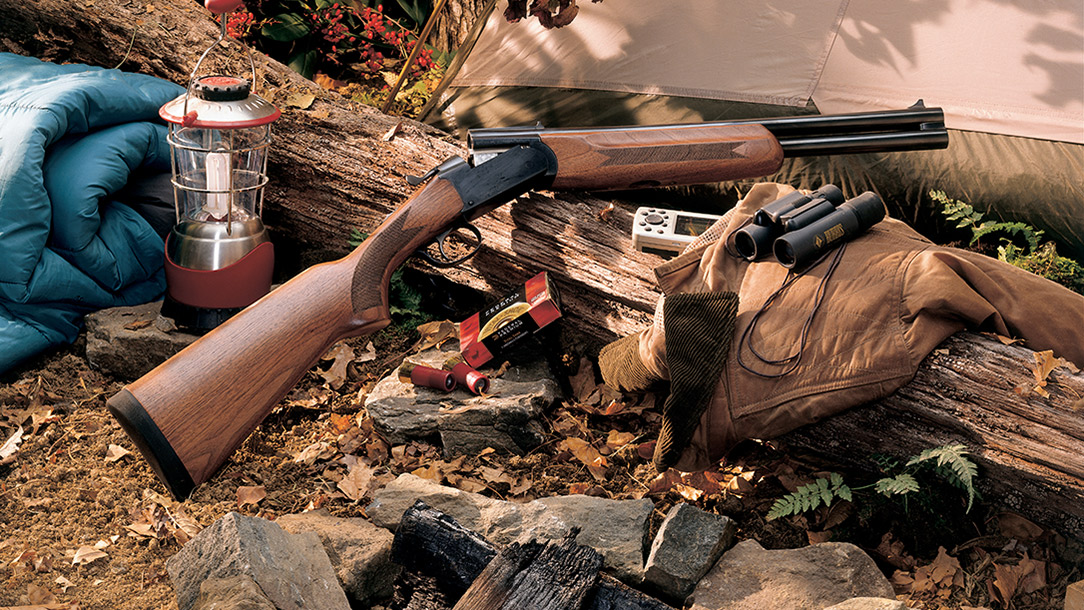What Are Coach Guns?
Coach guns were typically double-barreled shotguns with short barrels that made them easy to maneuver in tight spaces. They were also known for their reliability and stopping power, making them a popular choice for protecting stagecoaches from bandits in the Wild West.
The coach gun was perhaps the original defensive gun for travelers in the United States. Major and minor roadways have always been prime places for folks to get robbed by various forms of bandits. By the time messengers for Wells Fargo & Co. were running the route from Tipton, Missouri, to San Francisco in 1858 laden with passengers and gold, that fact hadn’t changed much from the Robin Hood days. It was 2,800 miles of rough country full of rough people and defense was necessary. In came the need for coach guns.
Coach Guns Were the Best Line of Defense
The company saw fit to arm its messengers with what would become known as messenger guns and coach guns. These are short-barreled, side-by-side Ithaca shotguns that were easy to bring to bear and shoot while inside the driver’s box. The spread from the short barrels also made it much easier to hit moving targets from a bouncing coach.
Advertisement — Continue Reading Below
Over the following years, coach guns would be both bought and made by people from all walks of life. Many companies would offer their double-barrel models from the factory with 12- to 24-inch barrels. Many considered it short compared to a hunting gun at the time. Other times, folks would buy full-size shotguns and cut the barrels down to the desired length. Thus making their own coach guns.
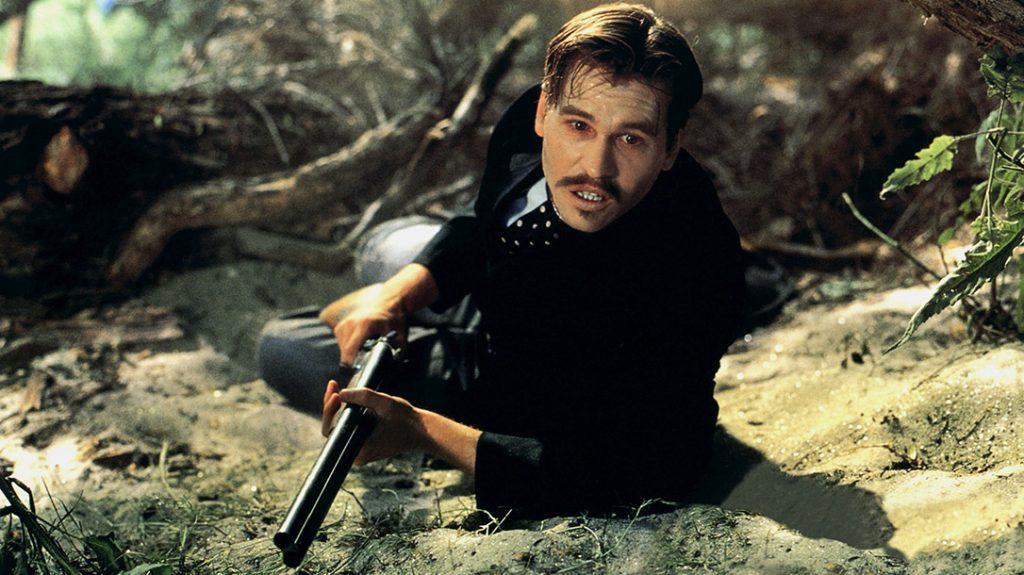
They were most often chambered for 12- or 10-gauge shells and had exposed double hammers and double triggers to match. They were nimble, simple, hearty, and while they only hold two shots, they were powerful ones.
Advertisement — Continue Reading Below
Of course, their use wasn’t limited to stagecoaches. A short shotgun was a great all-around defensive tool at medium range. It was easy to handle and there wasn’t much that could go wrong as long as the ammo was good. That is all, pretty much, still true. Extremely short defensive shotguns, like the Ithaca Auto & Burglar model, were popular until the National Firearms Act in 1934.
CZ Hammer Coach
Today, side-by-side shotguns themselves are fairly uncommon, only made by a handful of companies. Almost all double guns have internal hammer designs, which all serve to make the CZ Hammer Coach even cooler. Add the gorgeous color case hardening on the receiver and trigger guard, and this is one fine shotgun, inside and out.
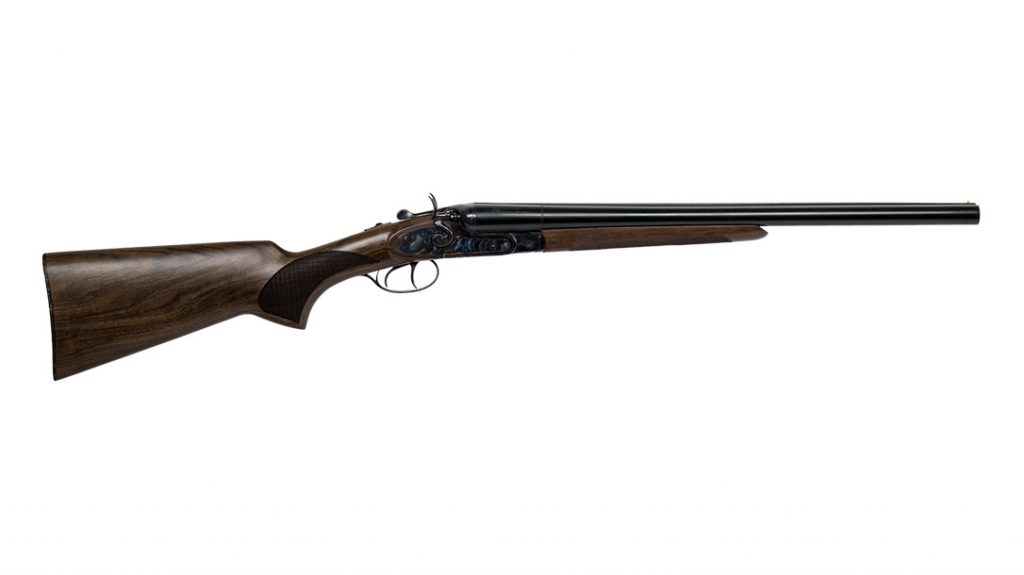
Advertisement — Continue Reading Below
When I took it to the range the first time, I found myself wishing I could have pushed through batwing doors with this little time machine of a shotgun. I also wished I’d thought to scrounge up some paper-hulled shells to go with it.
But times are tough, so I ran a wide variety of whatever shells I could find through this double-barrel, including a few targets loads, some 2 3/4-inch 00 Buck, a couple of my very precious 3-inch 5 shot Winchester Longbeard XR turkey rounds, and a few boxes of 1 3/4-inch Federal Shorty rounds. Those little shells in 8 shot make for a fun range pairing with the Hammer Coach. And the #4 Buck rounds make for a solid, light-kicking self-defense load.
CZ Hammer Coach Details
The Hammer Coach comes with 20-inch cylinder choke barrels, which is right in the middle for coach-gun barrel length. Could the barrels be shorter and still be NFA-legal? Yeah, but 20 inches is a great length, giving the gun excellent balance and a smooth swing. Plus, those barrels produced solid patterns at, and a bit beyond, typical self-defense distances.
Advertisement — Continue Reading Below
All eight of the pellets from the 00 Buck rounds landed in the silhouette at 20 yards. The turkey loads produced dense and deadly patterns for a gobbler at 25 yards despite the cylinder choke. The gun didn’t do great on clays, but I can attribute that almost entirely to the shooter, not the gun.
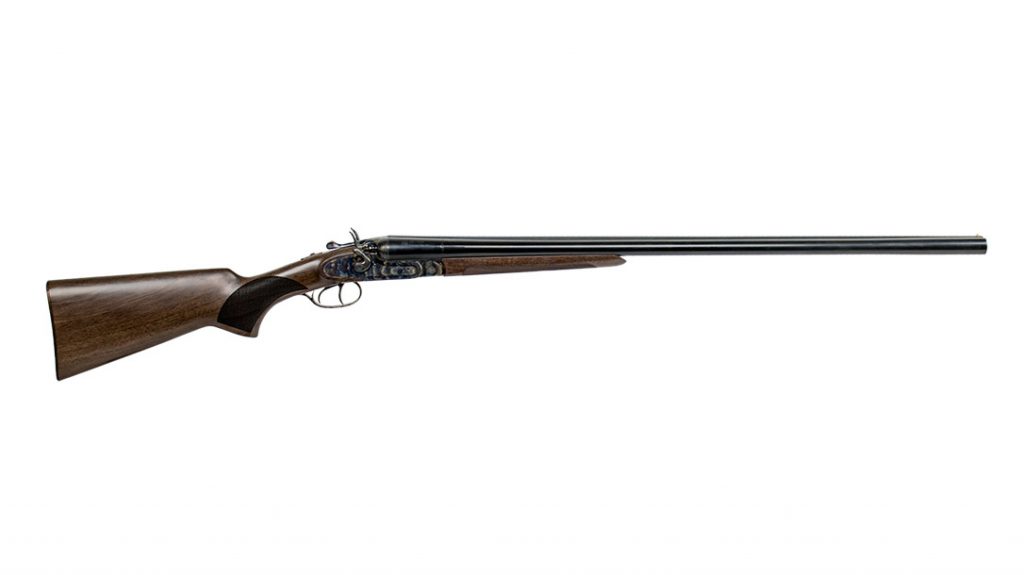
I will say, the exposed hammers take a tiny bit of getting used to. They also add a couple of steps to the loading and firing process. The tang safety means the gun can be carried while hunting with the hammers cocked and the safety on. Just like a hammerless shotgun. Just don’t forget to cock them.
Advertisement — Continue Reading Below
You shouldn’t forget the hammers are there and that they need to be cocked. After all, if you haven’t cocked them—they’re right in your face—but it could happen. I’m not saying it happened to me…I’m just sayin’.
While it shoots great, the best aspect of this shotgun is the feel and the nostalgia. Something about those side-by-side barrels with the ears of the hammers sitting behind them just brings the scent of worn saddle leather to your nostrils as you squint against a non-existent glare. It’s the kind of gun that could make someone get into Cowboy Action Shooting, and it’s the exact kind of gun those shooters seek.
Break-In Period
A word of warning, however: The Hammer Coach has tight tolerances, which is a good thing. But it also means the gun requires a bit of breaking in. The action is extremely tight out of the box and even a little tough to open at first. It loosened up quite a bit after just two range sessions, and I’m sure it wouldn’t take long for the barrels to start falling open when you press the action release lever, but it’s just something to be aware of.
Advertisement — Continue Reading Below
Additionally, if you’re going to spend extended time at the range or firing any kind of 3-inch magnum shells, just be aware the Hammer Coach comes with an old-school steel buttplate. It will beat you up after a little while, and 3-inch turkey shells are going to make you know you shot them. If you’re recoil sensitive, consider a slip-on buttpad or a recoil pad for extended shooting sessions.
If you prefer a hammerless version of this excellent coach gun, CZ makes the Sharp-Tail Coach, which is basically the same shotgun, just without the rabbit ears on the receiver.
Or if you want the naked hammers and full-length barrels, then the CZ Hammer Classic is sure to fit the bill with its huge, period-correct 30-inch barrels. Otherwise, it’s the same gun as the Hammer Coach.
Advertisement — Continue Reading Below
Stoeger
Another company that produces some great short double guns is Stoeger. There are 16 models in their coach gun line in both 12- and 20-gauge with different finishes and stock options, all with 20-inch barrels. While the company offers several models with double triggers, there are none with exposed hammers.
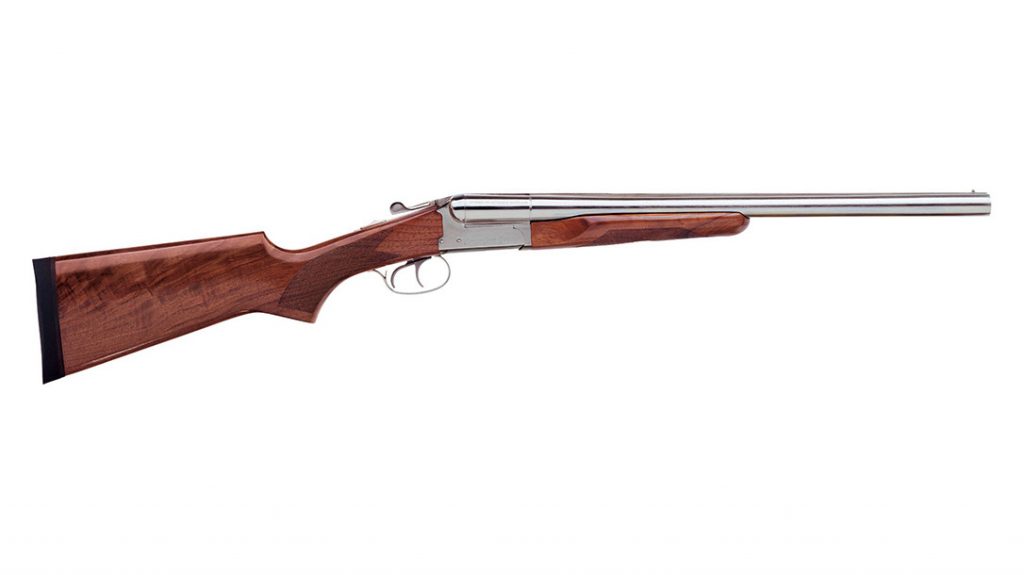
Stoeger also makes the Double Defense side-by-side shotgun in 12- and 20-gauge with 20-inch ported barrels, black synthetic furniture, and tactical features like optic and accessory rails, making for a very modern take on a defensive coach gun.
Advertisement — Continue Reading Below
This gun can also be had as an over-under in a configuration that is similar to the excellent Stoeger Condor Outback shotgun with its distinctive nickel receiver and barrels against black walnut furniture. The Condor Outback is also available with a less striking combo of blued steel and an A-grade walnut stock or a synthetic stock.
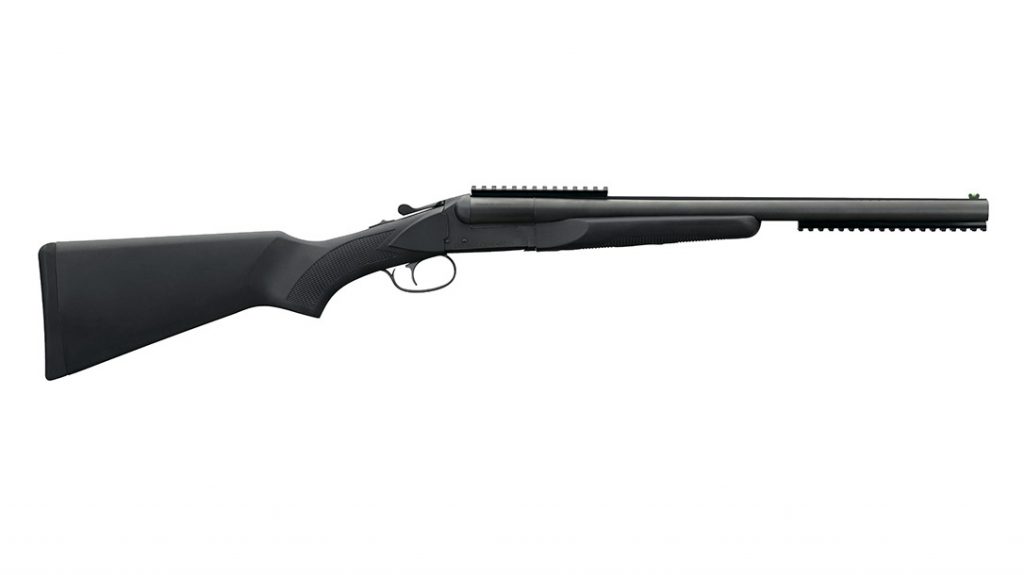
But if you have your heart set on that exposed-hammer goodness, there’s at least one other option out there if you don’t want to hit the used market.
Cimarron
Cimarron Firearms has a reputation for its excellent reproductions of Old West pistols, rifles, and shotguns. Their 1878 Coach Gun got its inspiration from an actual period coach gun in their collection.
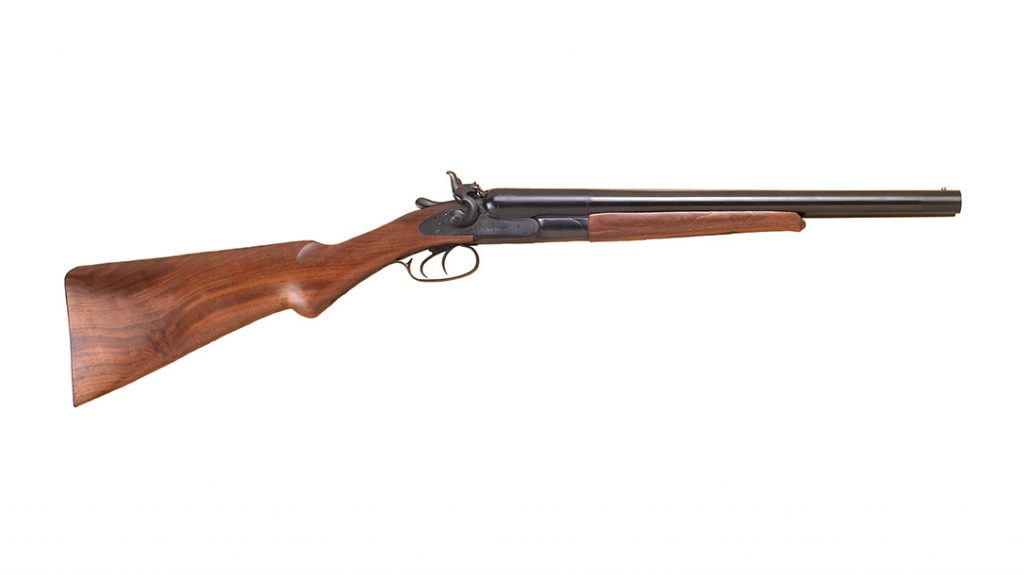
It comes with 20-inch blued barrels (full 26-inch barrels are available) and exposed hammers with a color case hardened receiver.
Cimarron also makes slightly fancier and more expensive Doc Holliday and Wyatt Earp versions of the short double barrel with various embellishments.
Charles Daly
If you want to get a little less traditional with things, there are a lot of great offerings from Charles Daly. The company’s hammerless Side-By-Side Coach Shotgun comes in 12- or 20-gauge with 20-inch barrels like the others but with a bit of added capability. The Daly Coach Gun has barrels threaded for Rem choke tubes, adding versatility to this compact, break-action shotty.
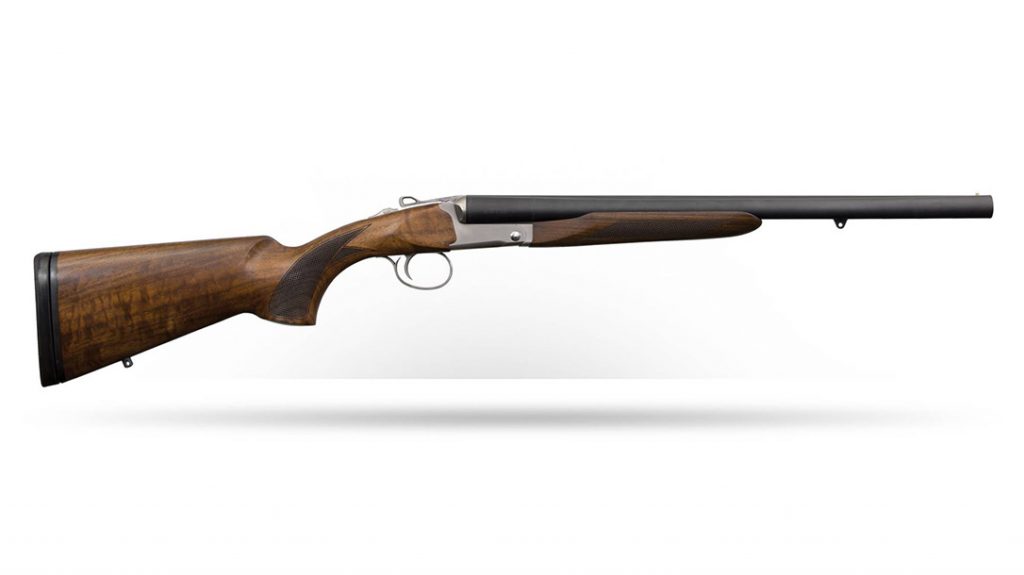
Similar to the Stoeger Double Defense model, the Charles Daly 204XT is an over/under tactical break-action shotgun with 20-inch barrels, rails for optics and accessories, extended choke tubes and a single selective trigger with a tang mounted safety control switch. Blued steel and a black synthetic stock add to the overall modern and tactical feel.
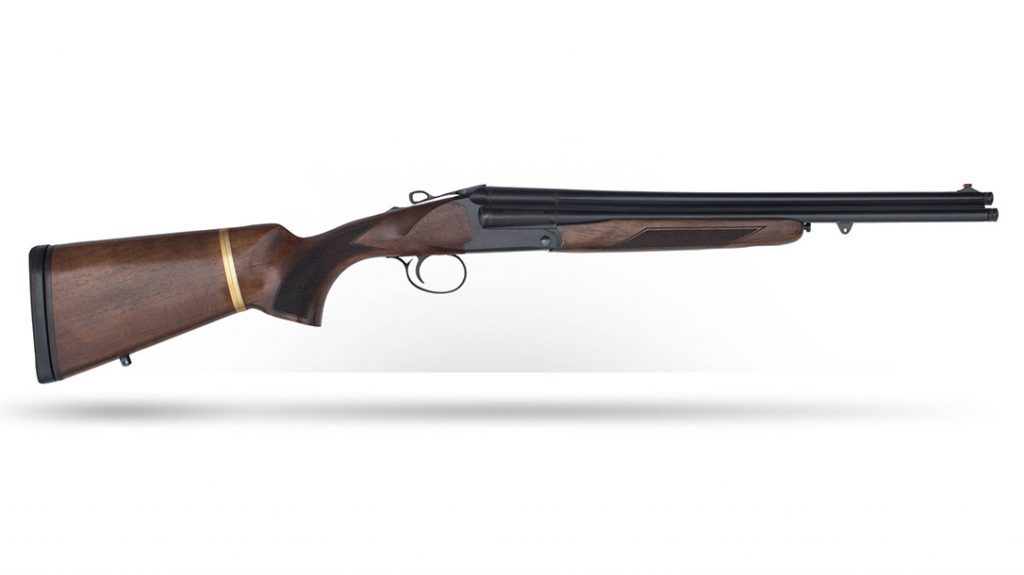
But why limit yourself to two shots when you can have three? When Daly introduced its triple-barrel break action shotguns a few years ago, there were a lot of sneers and jokes, until people started shooting them. The extra barrel doesn’t add nearly as much weight or awkwardness as you might think, and the gun just feels good and shoots really well.
The Triple Threat is the abbreviated version of the Triple Crown shotgun with 18.5-inch barrels. It comes in 12- or 20-gauge, or .410 bore with either blued steel and walnut or in a tactical model with a black synthetic stock and Picatinny rails. Like the double-barrel version, the Triple Threat accepts Rem choke tubes, allowing for a different choke on each barrel, if desired.
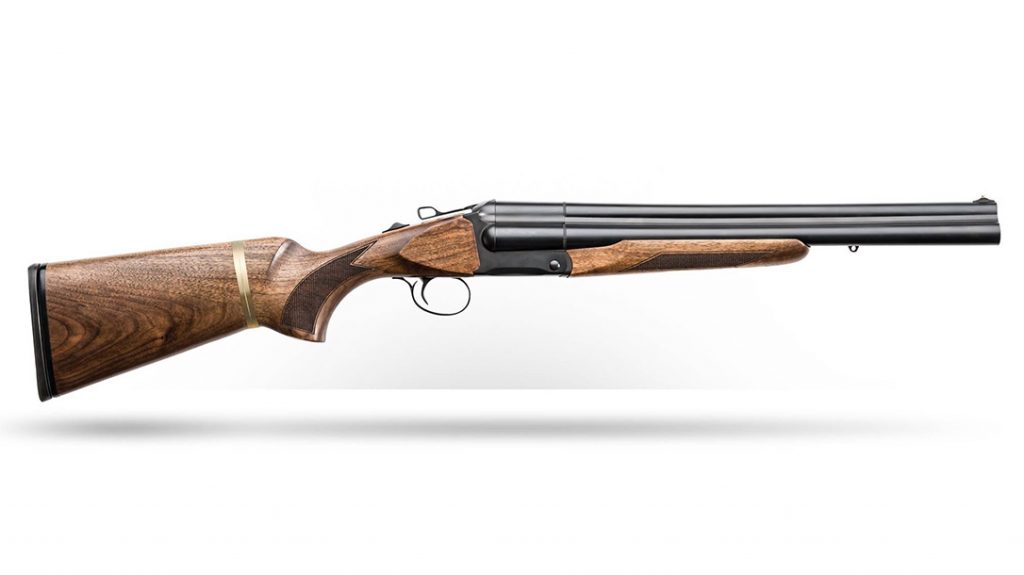
In case you were wondering, the three barrels fire in sequence with each pull of the single trigger—first the right barrel, then the left, and then the top.
Wrapping It Up
Being able to point and shoot at a threat quickly and with devastating effects remains a goal of all self-defense firearms, and a short-barreled shotgun is still a great tool for the job. However, shotguns have come a long way since the days of the horse and buggy. With their limited capacity, the original coach guns might not be the best comparatively, but they are still really solid and effective. Not to mention the joy of shooting one of the above beautiful examples.
If you’re looking for a short-barreled shotgun for home defense, there are lots of modern semi-auto and pump options out there, not to mention the SBS shotgun configurations you can create, plus the non-NFA shorty shotguns that are tax-stamp free. Here’s hoping the semi-auto TAC-13 makes a return when the Remington firearms brand gets up and running again.
For More Info
Charles Daly
CharlesDaly.com
Chiappa
ChiappaFirearms.com
Stoeger
StoegerIndustries.com
